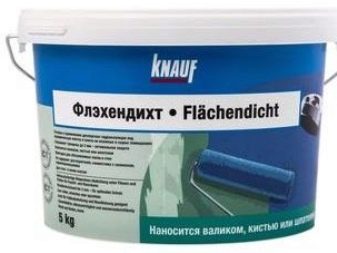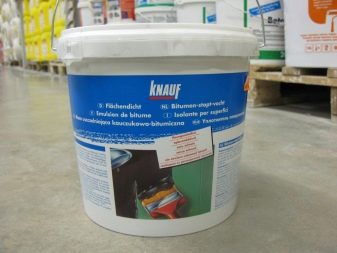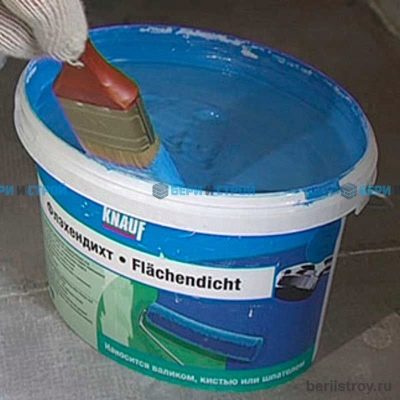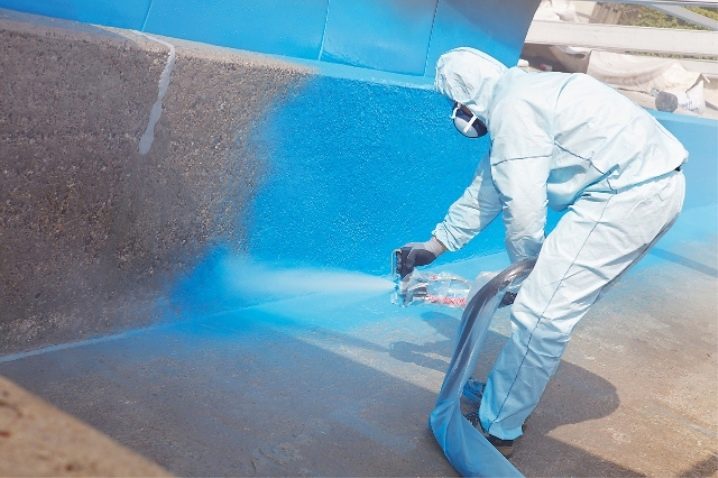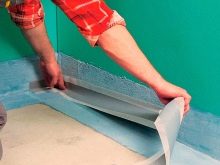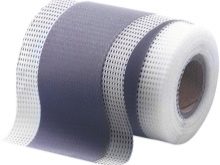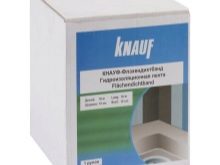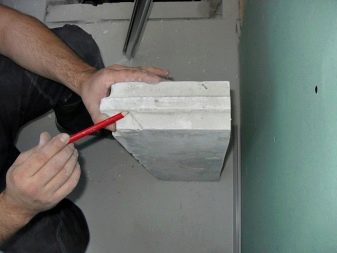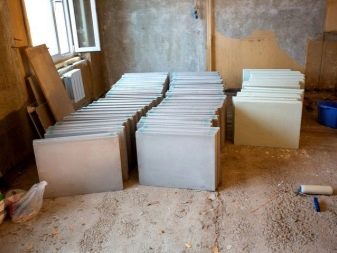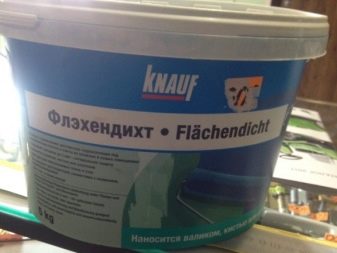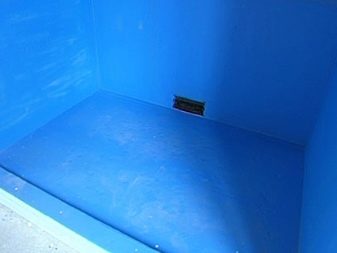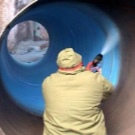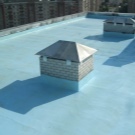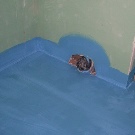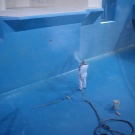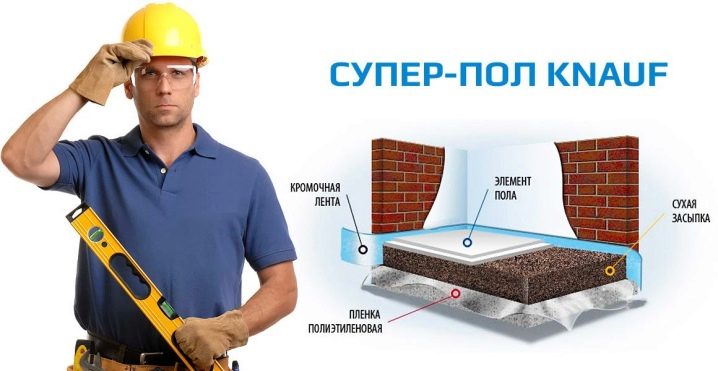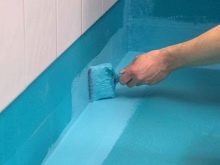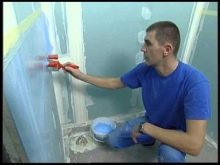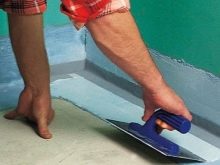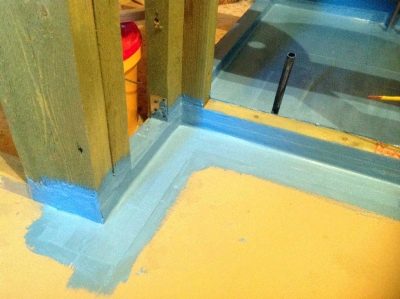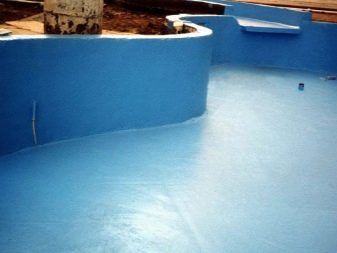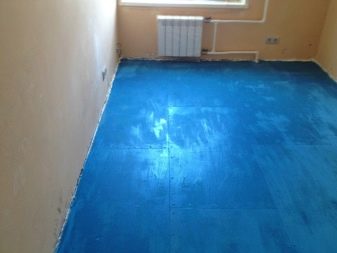The subtleties of using waterproofing Knauf
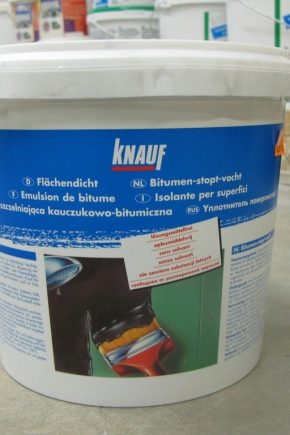
In addition to such well-known products as drywall and gypsum-based mixtures, the famous Knauf company also became famous for the high quality of its waterproofing. These materials are made in the form of tapes, emulsion and special mastic.
Kinds
To protect against moisture and moisture as a result of atmospheric exposure, the manufacturer Knauf created two types of waterproofing materials:
- coating bitumen-polymer masticwhich can be used for external and internal works;
- rubber emulsion under the name "liquid rubber", used mainly for indoor use.
The advantages of the first category of material include:
- high strength and reliability due to the plasticity of the mastic;
- preservation of useful characteristics at zero and negative air temperature;
- increased water resistance;
- This material is simply mounted and has a low cost.
Among the shortcomings can be identified:
- the need to warm up the waterproofing before applying to the plane;
- in some cases organic solvents are used for a more uniform coating to dilute the formulation;
- when the frost is 10-20 degrees waterproofing can become brittle;
- subject to deformation under mechanical action;
- the durability of the material is not more than 10 years, after which it should be replaced.
Among the main advantages of liquid waterproofing "Knauf" can be called its high adhesion with gypsum, concrete, gypsum fiber, plasterboard sheets and cement. In addition, it is a safe option for human health, which is why the product is most often used for indoor living spaces, as well as industrial facilities served by people.
The second option is also suitable for a number of outdoor works, but only at above zero temperatures.
Related Products
Along with the main materials Knauf, a special sealing tape is used, which is used for reliable waterproofing of joints of floors and walls, corners (external and internal), cracks after sealing with a putty. It is a plastic polyester fabric with a waterproof insert in the center.
The main properties of the product are:
- resistance to abrasion;
- good tensile properties;
- reliable fixation;
- uniform distribution when laying.
Usually the product is mounted in the very first waterproofing layer, fixing along the edges and corners and trying to prevent wrinkles on the material. After that, the surface is covered with the following layers and sheathed with stone, granite or tile.
A special place among the Knauf products is occupied by moisture-resistant tongue-and-groove panels (GWP)which are suitable for rooms with high humidity, for example, for bathrooms. Thanks to the water-repellent impregnation, gypsum plates are not susceptible to corrosion, mold, and fungus damage. In addition, they absorb noise well, are refractory, and are environmentally friendly in their composition.
Often, this material is additionally protected with waterproofing mastic and tape sealant, and then revetted the treated surface.
Application area
Humidity is an important aspect that directly affects the duration of operation of various buildings and premises, so the type of waterproofing is the best solution, especially when it is necessary to minimize the reconstruction and repair work.
This is due to the optimal match of the quality and cost of Knauf materials. Liquid penetrating waterproofing is quite affordable, but it cannot be called universal, so bitumen-polymer mastic remains the priority.
Such material can be used for:
- protection of foundations during the construction of buildings;
- dry screed floors in bathrooms, swimming pools;
- pretreatment of tile surfaces;
- waterproofing loggias, balconies, basements;
- processing of pitched and flat roofs, roofing;
- isolation of the passage of the pipe from the walls in the bathrooms and showers;
- prevent corrosion of metal structures.
Such waterproofing can be applied even if a “Superpol Knauf” is used, which is not afraid of water.
Product properties are not limited to good adhesion to concrete, drywall and brick, sometimes there is the possibility of its use in combination with plastic.
Installation of waterproofing material
Aqueous dispersion of synthetic rubber is used in many situations, but it is unacceptable to use it with a constant load of standing water, for example, in swimming pools.
Application technology:
- Before waterproofing, any surface is thoroughly cleaned from dust, debris, corrosion, and oil stains for optimal adhesion;
- the plane should be as leveled as possible, and the irregularities sealed (in the presence of reinforcement it can be cut down);
- next is the primer base;
- defects may be leveled with waterproofing solution;
- you can stir the finished material before applying directly in the packaging container (plastic bucket);
- apply the mixture with a roller, brush or paint brush in two or three layers;
- in the inner rooms, the application should start from the corners and joints, the Knauf sealing tape is placed in the wet layer, and the excess composition is smoothed with a spatula;
- Do not forget about pipe bends, which are sealed with special cuffs.
Material consumption is of great importance: if the surface is smooth, then 350-500 g is enough for 1 m2, with a porous structure - from 450 to 700 g for each layer. The usual thickness of the layers in raw form should reach about 1.1 mm, and after drying - 0.8 mm.
It is important to observe the time interval of 3 hours when they dry. We must understand that this time is sufficient if the humidity in the room does not exceed 50%, and the temperature is +20 degrees. It makes no sense to make thick layers of waterproofing, as they will dry much longer.
Before you do the finishing facing, it should take at least 12 hours. The finishing tile keeps within when using waterproof adhesive, for this purpose the elastic basis "Knauf Fleks" will approach. The thickness of the adhesive layer should be no more than 5 mm.
For such works, tile adhesives, which have a long hardening time, are not suitable, and the use of waterproofing may cause the cladding to creep. Skilled craftsmen recommend cladding tiles with a side of not more than 33 cm.
Product Reviews
About waterproofing Knauf consumer reviews are very different. Basically, they confirm the high quality of this material:
- convenient use is noted, especially with a brush, since the liquid mixture is evenly lined up, filling all the irregularities;
- tile and other finishing fragments are placed on the waterproofing easily and reliably;
- the product dries completely in about a day in conditions of normal humidity, adheres well to plasterboard sheets and concrete;
- almost unpleasant odor;
- material is economically consumed and does not pass water.
As for negative reviews, they are usually associated with the acquisition of expired or fake material. In this case, it may crumble, have a heterogeneous texture, unusual color and smell.
Knauf waterproofing, if it is purchased from the manufacturer, is a quality material that helps to conduct a protective surface treatment at the highest level.
But a positive and durable result can be expected only when all the installation requirements are met.
To learn how to waterproof the bathroom with your own hands, see the following video.

